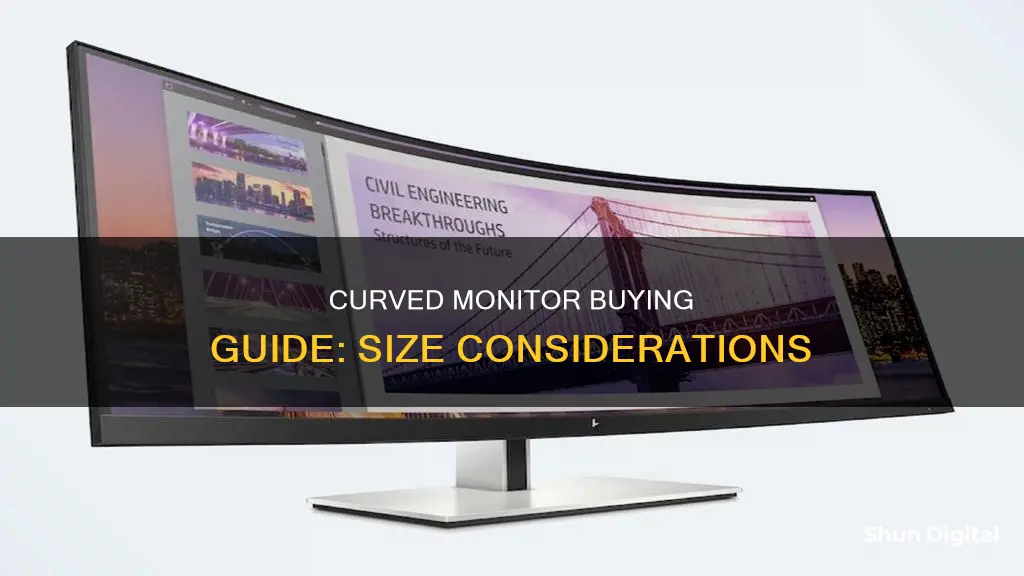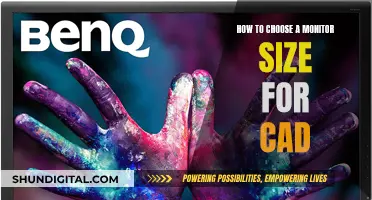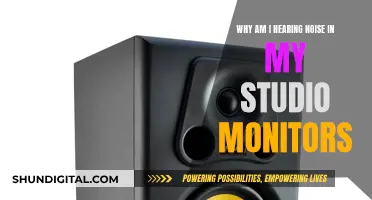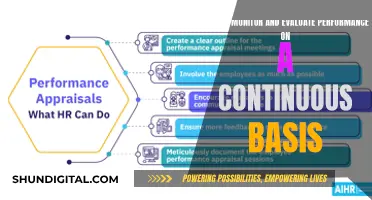
When it comes to choosing the right curved monitor, there are several factors to consider. Firstly, curved monitors are particularly beneficial for gaming and entertainment, providing an immersive viewing experience by covering more of your peripheral vision. They are also advantageous for professionals, including graphic designers, photo and video editors, and those who spend long hours at their computers, as they can reduce eye strain and provide a more comfortable viewing experience.
The size of the curved monitor is an important consideration. Curved monitors typically need to be around 30 inches or larger to be effective, with the extra size allowing the screen to wrap around the user and create an immersive feel. The curvature of the monitor is another key factor, with a lower number indicating a more aggressive curve. For example, a monitor with an 1800R curvature has a radius of 1800mm, which is the recommended maximum viewing distance for an optimal experience.
Other specifications to consider include the resolution, refresh rate, and response time, which are particularly important for gamers. Additionally, the panel quality, such as IPS or VA, can impact the viewing angle, response time, and colour accuracy. Finally, it is essential to keep your budget in mind, as curved monitors can vary significantly in price depending on the features and specifications offered.
| Characteristics | Values |
|---|---|
| Screen size | 30" or larger for an effective immersive feel |
| Viewing angle | Larger than flat displays; directly correlates to screen size |
| Resolution | 4K, 1440P, 1080P |
| Refresh rate | 60Hz, 144Hz, 240Hz |
| Response time | Maximum of 4ms for gamers |
| Panel quality | IPS panels offer true colour fidelity, wide viewing angle, and faster response times |
| Aspect ratio | Ultra-wide (21:9) or standard (16:9) |
| Budget | Varies, but generally more expensive than straight monitors |
What You'll Learn

Curved monitors for gaming
Curved monitors are designed to reduce eye strain by matching the field of view of the human eye more closely. They are particularly good for gaming, as they provide an immersive experience, with the player's peripheral vision being filled by the game.
Size
Curved monitors tend to be big, with the smallest size available being 24 inches. However, for gaming, a larger monitor is often preferable, with sizes of 27 inches and above being common. This is because larger monitors provide a more immersive experience, and in games where reaction times are crucial, a larger monitor can allow players to see more of the game world at a glance, without having to move their eyes or head.
That being said, there are some drawbacks to larger monitors. They are more expensive, require more space, and are less suitable for multi-display setups.
Curvature
The curvature of a monitor is indicated by an "R" value, with smaller values indicating a more curved monitor. For example, a monitor with a curvature of 1800R will have a less curved screen than one with a curvature of 800R.
For gaming, a more curved monitor is often preferable, as it provides a more immersive experience. However, it is important to consider the distance you will be sitting from the monitor, as a more curved monitor viewed from up close can negatively impact your viewing experience.
Resolution
The resolution of a monitor refers to the number of pixels on the screen and is an important consideration when choosing a gaming monitor. A higher resolution will provide a sharper, more detailed image, but will also require a more powerful GPU.
For gaming, a resolution of 1080p is generally considered sufficient for monitors up to 27 inches, while a resolution of 1440p is ideal for monitors between 27 and 32 inches. For monitors 32 inches and above, a resolution of 4K is recommended to avoid pixelation.
Refresh Rate and Response Time
The refresh rate of a monitor refers to the number of times the image is updated per second and is measured in Hertz (Hz). A higher refresh rate will provide a smoother image, which is particularly important for fast-paced, competitive gaming.
The response time of a monitor refers to the time it takes for a pixel to change colour and is measured in milliseconds (ms). A lower response time will result in less lag, which is also important for competitive gaming.
Other Considerations
When choosing a curved gaming monitor, it is also important to consider the aspect ratio, which is the ratio of the width of the screen to its height. The standard aspect ratio is 16:9, but for gaming, an aspect ratio of 21:9 or 32:9 can provide a more immersive experience.
Additionally, it is important to consider the type of panel used in the monitor. VA panels are the most common in curved monitors and offer excellent response times, while IPS panels offer better colour accuracy but slower response times. OLED panels offer the best of both worlds but are the most expensive.
Finally, it is important to consider your budget, as curved gaming monitors can range in price from a few hundred to a few thousand dollars.
Immersive Viewing: Optimal Size for 1800R Monitors
You may want to see also

Curved monitors for creative professionals
The right curved monitor for creative professionals will depend on the type of work they do, their budget, and their workspace. Here are some options and factors to consider when choosing a curved monitor for creative work.
Screen Size and Resolution
Curved monitors come in a variety of sizes, from 24 inches to 49 inches. For creative professionals, a larger screen size can provide more workspace and an immersive experience. The resolution of the monitor is also important, with options including Full HD (1080p), WQHD (2560x1440), 4K (3840x2160), and 5K (5120x1440). A higher resolution will provide sharper text and images, but it may also be more expensive.
Colour Accuracy and Panel Type
For creative professionals, colour accuracy is crucial. Look for monitors with high sRGB and DCI-P3 coverage to ensure accurate colour representation. Different panel types such as IPS, VA, and TN offer varying colour accuracies and viewing angles. IPS panels are known for their excellent colour reproduction and wide viewing angles, making them a popular choice for creative work.
Refresh Rate and Response Time
A high refresh rate and fast response time are important for gaming and video editing. A refresh rate of 144Hz or higher is ideal for a smooth gaming experience, while a response time of 1ms reduces motion blur and is ideal for video editing.
Budget and Additional Features
Curved monitors can range in price from a few hundred to a few thousand dollars, so it's important to consider your budget when making a purchase. Additional features to look for include USB hubs, built-in speakers, height and tilt adjustments, and connectivity options such as HDMI, DisplayPort, and USB-C.
Recommendations
- Dell UltraSharp 40 Curved Thunderbolt Hub Monitor (U4025QW): This monitor offers a large 40-inch screen, high resolution, and a wide range of connectivity options, including Thunderbolt 4 and USB-C.
- Philips Brilliance 499P9H curved monitor: With a 5K resolution and a 32:9 aspect ratio, this monitor provides a lot of workspace and an immersive experience. It also has good colour accuracy and connectivity options.
- Samsung CRG9 curved monitor: This ultra-wide monitor has a 32:9 aspect ratio and a Quantum Dot panel that offers a wide colour gamut. It also has a high refresh rate and response time, making it suitable for gaming.
- ASUS ProArt PA34VC curved monitor: This monitor is designed for professional artists and offers 100% sRGB coverage, HDR10 support, and a wide range of connectivity options, including USB-C/Thunderbolt 3.
- Dell Alienware AW3423DWF: This monitor has a QD-OLED panel, providing deep blacks and vivid colours. It is ideal for gaming and atmospheric experiences.
Asus vs LG: Who Makes Better Monitors?
You may want to see also

Curved monitors for everyday use
Curved monitors have become increasingly popular in recent years, and for good reason. They offer a more immersive viewing experience than traditional flat-screen monitors, reducing eye strain and providing a wider field of view. This makes them ideal for everyday use, whether you're working, gaming, or enjoying multimedia content.
Benefits of Curved Monitors for Everyday Use
The curved design of these monitors fills your field of view, drawing you into the scene and creating a sense of dimensionality that flat screens lack. This immersive quality makes curved monitors particularly well-suited for gaming and multimedia entertainment. The curved screen also eliminates distortion, especially at the edges, and reduces eye strain by allowing your eyes to take in the entire display at once without excessive movement or strain.
Curved monitors are also more space-efficient than flat screens, as they can replace multiple displays, freeing up valuable desk space. The larger screen size of curved monitors allows you to run multiple apps or windows simultaneously, enhancing your productivity and multitasking abilities.
Considerations for Everyday Use
While curved monitors offer numerous advantages, there are a few considerations to keep in mind for everyday use:
- Viewing Angle: Curved monitors offer larger viewing angles compared to flat screens, but for the best experience, it's important to sit at the centre of the display. Using multiple curved monitors is not ideal as it can impact the viewing experience.
- Size and Space: Curved monitors typically come in larger sizes, with an average size of around 34 inches, though they can range from 24 to 49 inches. Ensure you have sufficient desk space to accommodate the larger screen size.
- Cost: Curved monitors can be more expensive than their flat-screen counterparts, especially if you opt for high-end features such as a higher resolution or refresh rate. However, there are also many affordable options available on the market.
- Mounting: Due to their curved shape, these monitors may be more challenging to wall-mount and may require specific mounts and positioning.
- Glare: The curved geometry of the screen can make it more prone to glare when viewed at certain angles, so it's advisable to position the monitor away from multiple light sources.
Recommended Curved Monitors for Everyday Use
When choosing a curved monitor for everyday use, consider your specific needs and budget. Here are some recommended options:
- Dell Alienware AW3423DWF: This 34-inch QD-OLED monitor offers a bright display with vivid colours and deep blacks, making it great for gaming and multimedia use.
- Dell U4025QW: Featuring a massive 40-inch screen with a 5K2K resolution, this monitor provides sharp text and images and is ideal for office work, with a range of productivity features and a large USB hub.
- Dell S3422DWG: If you're on a budget, this 34-inch curved monitor offers good value for money. While it has a lower picture quality than more expensive models, it's still a solid choice for gaming and everyday use.
- Asus ProArt PA34VC: This 34-inch ultra-wide monitor is designed for creative professionals, offering a high-density display with vivid and sharp colours. It also has a high refresh rate, making it suitable for gaming as well.
- Samsung Odyssey Neo G7: With a gorgeous 4K picture and a high refresh rate, this 32-inch monitor is an excellent choice for gaming and general use, providing superb contrast and colour accuracy.
Removing the Grid: ASUS Monitor Calibration Guide
You may want to see also

Ultrawide curved monitors
When choosing an ultrawide curved monitor, it's important to consider the screen size and viewing angle. Ultrawide monitors typically have larger screens, usually measuring 30 inches or more, to create an immersive feel. The viewing angle is directly correlated to the screen size and the curve of the monitor. A monitor with a curvature of 1800R, for example, has an optimum viewing distance of 1.8 meters, while a 3000R monitor is best viewed from a distance of 3 meters.
Some popular options for ultrawide curved monitors include:
- Dell UltraSharp 38 USB-C Hub Monitor (U3824DW): This 38-inch monitor is ideal for home offices or small businesses. It offers a modest curve, a wide range of ports, and superior contrast with IPS Black panel technology.
- Samsung Odyssey OLED G9: With a 49-inch curved screen and a 32:9 aspect ratio, the Odyssey G9 delivers a truly immersive gaming experience. It boasts exceptional colour accuracy and coverage, as well as a high contrast ratio.
- LG UltraWide Monitors: LG's ultrawide monitors feature a 21:9 aspect ratio and HDR10 technology. They offer single-cable Thunderbolt 3 connectivity and a screen splitter feature that allows you to divide the screen into multiple segments for easy multitasking.
- Corsair Xeneon 34WQHD240-C QD-OLED: This 34-inch curved monitor is great for both work and gaming. It has a dazzling ultra-wide screen with AMD FreeSync Premium and Nvidia G-Sync compatibility.
- HP E45c G5 DQHD Curved Monitor: The HP E45c is a 45-inch ultrawide monitor that can substitute for two individual QHD monitors. It offers full sRGB colour coverage, good ergonomics, and a range of connection options.
Asus Predator Monitors: Unlocking the Power with Nvidia
You may want to see also

Curved monitors for professionals
Curved monitors are becoming an increasingly popular choice for professionals, from graphic designers to data analysts. They offer a more immersive experience, reduce eye strain, and provide extra screen real estate for improved productivity.
When choosing a curved monitor for professional use, there are several key factors to consider:
Screen Size
Curved monitors typically range from 24 to 49 inches in size. For the best immersive experience, a larger screen size is recommended, with a minimum of 30 inches considered ideal. However, it's important to choose a size that suits your desk space and viewing distance.
Aspect Ratio
Curved monitors are available in ultra-wide (21:9) or standard (16:9) formats. The ultra-wide format provides a wider field of view, which is beneficial for certain types of work, such as graphic design or engineering, where a broader overview is advantageous.
Panel Quality
IPS panels are often recommended for professionals due to their true colour fidelity, wide viewing angles, and faster response times. This is especially important for graphic designers and other creative users who require accurate colour reproduction and smooth performance.
Screen Resolution
The resolution of a curved monitor will determine the sharpness of the image. Look for a resolution that suits the size of the screen and your specific needs. For example, a 4K resolution (3840 x 2160) will provide exceptional detail, but it may come with a higher price tag and require a more powerful graphics card.
Refresh Rate and Response Time
A higher refresh rate, measured in Hertz (Hz), will provide smoother visuals with less motion blur. A rate of 75Hz is generally considered sufficient, but for professionals who require fluidity and responsiveness, such as video editors or animators, a rate of 144Hz or higher is recommended.
The response time, measured in milliseconds (ms), refers to how quickly pixels can change colour. A maximum response time of 4ms is ideal for ensuring smooth and responsive performance.
Ergonomics
Adjustability is an important factor when choosing a curved monitor. Look for a model that allows you to adjust the height and tilt to suit your needs. A swivel mount is also beneficial if you want the option to switch between landscape and portrait orientations.
Connectivity
Ensure that the curved monitor you choose has the necessary ports for your devices, such as USB, HDMI, and DisplayPort. This will ensure that you can easily connect all your peripherals and accessories.
Eye Comfort
Curved monitors are known for reducing eye strain compared to flat monitors. Look for features such as automatic brightness adjustment and a reading mode that reduces blue light to further enhance eye comfort during extended use.
Dell UltraSharp 40 Curved Thunderbolt Hub Monitor (U4025QW)
This 40-inch curved monitor offers a high 5K2K resolution and excellent image quality, making it ideal for creative professionals. It features a wide range of connectivity options, including Thunderbolt 4 and USB-C ports, making it a great choice for those who need a robust hub for their laptop or desktop setup.
Asus ProArt PA34VC Professional Curved Monitor
The Asus ProArt PA34VC is a 34-inch curved monitor designed with graphic designers in mind. It offers excellent colour accuracy, covering 100% of the sRGB colour gamut, and comes pre-calibrated for an accurate out-of-the-box experience. The ergonomic design and Adaptive-Sync technology make it a comfortable and smooth choice for creative work.
Dell UltraSharp 38 USB-C Hub Monitor (U3824DW)
This 38-inch curved monitor is ideal for professionals who need a balance between screen real estate and compact size. It provides a modest curve, superior contrast with IPS Black panel technology, and a rich range of ports for connectivity.
JN-5X40
The JN-5X40 is a 39.7-inch curved monitor that offers a smooth and immersive viewing experience. It is well-suited for a variety of tasks, including office work, movie watching, and gaming.
LG 40WP95C-W
The LG 40WP95C-W is another 40-inch curved monitor option with a 5K2K screen resolution. While it may have fewer features than some other models, it is a good choice for professionals on a budget who still want a large, high-resolution display.
In conclusion, curved monitors can offer significant benefits for professionals, including improved immersion, reduced eye strain, and enhanced productivity. By considering factors such as screen size, aspect ratio, panel quality, and connectivity, you can choose a curved monitor that suits your specific professional needs and enhances your workflow.
Registering Your ASUS Monitor: A Step-by-Step Guide
You may want to see also
Frequently asked questions
Curved monitors can provide a more immersive viewing experience, reduce eye strain, and improve productivity. They can also be more space-efficient than flat monitors, as they eliminate the need for multiple displays.
Curved monitors are typically 30 inches or larger, as this allows the display to wrap around the user and create an immersive feel. The ideal size also depends on the amount of space you have available.
This depends on your intended use. For gaming, fast response times, high refresh rates, and compatibility with FreeSync or G-Sync technologies are key. For creative users, colour quality, image precision, and optimum energy performance are important. For everyday use, look for a balance between visual comfort and cost, with good brightness, a wide viewing angle, and a resolution suited to the screen size.







